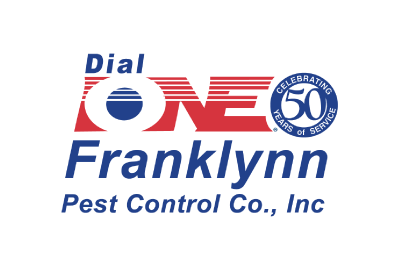Handy Tips to Thwart Termites Before Your Next Termite Treatment
While termites can feel like the end of the world, rushing into a termite treatment can have dire consequences. Before you start setting off termite foggers, take the time to make sure you know your situation. Homeowners can reduce the risk of termite attack and termite damage by following these suggestions:
Eliminate wood in contact with ground
Termite problems often occur when wood components of the building are in direct contact with soil. Earth-to-wood contact affords termites easy access to food, moisture, shelter and direct, hidden entry into the building. Wood siding, doors and window frames, etc. should be at least six inches above ground level. Eliminating wood-to-soil contact may require regrading or pulling soil or mulch back from the foundation, cutting the bottom off wood latticework, or supporting steps or posts on a concrete base, (additional termite treatments may be needed). Posts or stairs embedded in concrete are also vulnerable to termite attack since they usually extend all the way through the concrete to the soil.
Important note: Termites can enter through tiny cracks in concrete. Contrary to popular belief, pressure-treated wood is still vulnerable to termite attack. Termites often enter the wood through cracks and cut ends or build tunnels over the surface.
Do not let moisture accumulate near the foundation
Termites are attracted to moisture and are more likely to infest if the soil next to the foundation is consistently moist. Divert water away with:
· Properly functioning gutters
· Downspouts
· Splash blocks
Repair leaking faucets, pipes and air conditioning units, and slope the ground next to the foundation. This way, surface water drains away from the building. Homes with poor drainage may need to have tiles or drains installed.
Pro tip! Orient lawn sprinklers and irrigation systems properly in order to minimize water puddling near the foundation.
Reduce moisture and humidity in crawl spaces
Most building codes call for one square foot of vent opening per 150 square feet of crawlspace area. For crawlspaces equipped with a vapor barrier the total vent area often can be reduced to one square foot per 300 to 500 square feet of crawlspace area. One vent should be within three feet of each exterior corner of the building. Vents should be kept free of leaves, dirt, and debris, and should not be obstructed by vegetation. Further reduce moisture and humidity in crawl spaces by installing 4-6 ml polyethylene sheeting over about 75 percent of the soil surface. The soil cover will act as a vapor barrier to reduce evaporation from the soil and condensation of moisture on joists and sub flooring.
Never store firewood or wood debris against foundations or inside crawlspaces
Termites are attracted to, what they consider, veritable buffets. These seemingly innocent items are actually delicious sources of food for these pesky critters:
· Firewood
· Lumber
· Cardboard boxes
· Newspapers
These things offer hidden entry into the structure and may allow termites to bypass surrounding soil treated with a termiticide. Additionally, avoid having vines, ivy and other dense plantings touching the house. Where practical, remove stumps, dead roots and form boards around and beneath buildings.
Use mulch sparingly, especially if you already have termites or other conducive conditions
Many people use landscape mulch for its aesthetic and plant health benefits. Improper usage, however, can contribute to termite problems. Termites love mulch primarily because of its moisture-retaining properties, providing an attractive food source. Since the moisture retaining properties of mulch are more of an attractant than the wood itself, the variety of mulch makes little difference (cypress, pine bark, eucalyptus, etc.). Crushed stone or pea gravel are comparable to wood mulch in terms of attraction, since they also retain moisture in the underlying soil. Apply mulch sparingly (a couple inches is usually adequate) and never allow it to contact wood siding or framing of doors or windows.
Consider having the home treated by your local termite control professionals
Buildings have many natural (often hidden) openings through which termites can enter. While the above measures will help make the structure less attractive to termites, the best way to prevent infestation is to protect it with a liquid termiticide. Preventively treating a home for termites is a prudent investment, especially if the structure has had no prior history of treatment. If a pest control firm previously treated the building, it is a good idea to maintain the contract by paying the annual renewal fee. Should termites re-infest -- which can happen even if the treatment was performed correctly, the company will return and retreat the affected area at no additional charge.
Signs of Termites
Whether one chooses to have their home preventively treated for termites, it helps to know the telltale signs of infestation:
• A mud foraging tunnels (shelter tube) on foundations, piers, sills, joists, etc.
• Winged "swarmer" termites, or their shed wings, on windowsills and along the edges of floors, etc.
• Damaged wood hollowed out along the grain, lined with bits of mud or soil
Call Dial One Franklynn Pest Control Today!
Do you have any questions about what to do when termites invade? We’re happy to answer! Call now for your FREE termite estimate! Mr. Azzarello is a Board-Certified Entomologist, one of the few working Entomologist in the Louisiana pest control industry. No matter what kind of pest you’re dealing with, Dial One can help.
Detecting hidden termite infestation requires a trained eye. Dial One Franklynn Pest Control offers a free termite estimate. We are a true Louisiana pest control company — in business since 1969. Mr. Azzarello is a Board Certified Entomologist, one of the few working Entomologist in the Louisiana pest control industry.
CALL TODAY 504-885-3101
DIAL ONE Franklynn Pest Control
Celebrating 50 Years in Business
Joe Azzarello, Owner / Board Certified Entomologists
Marcus Azzarello, President





